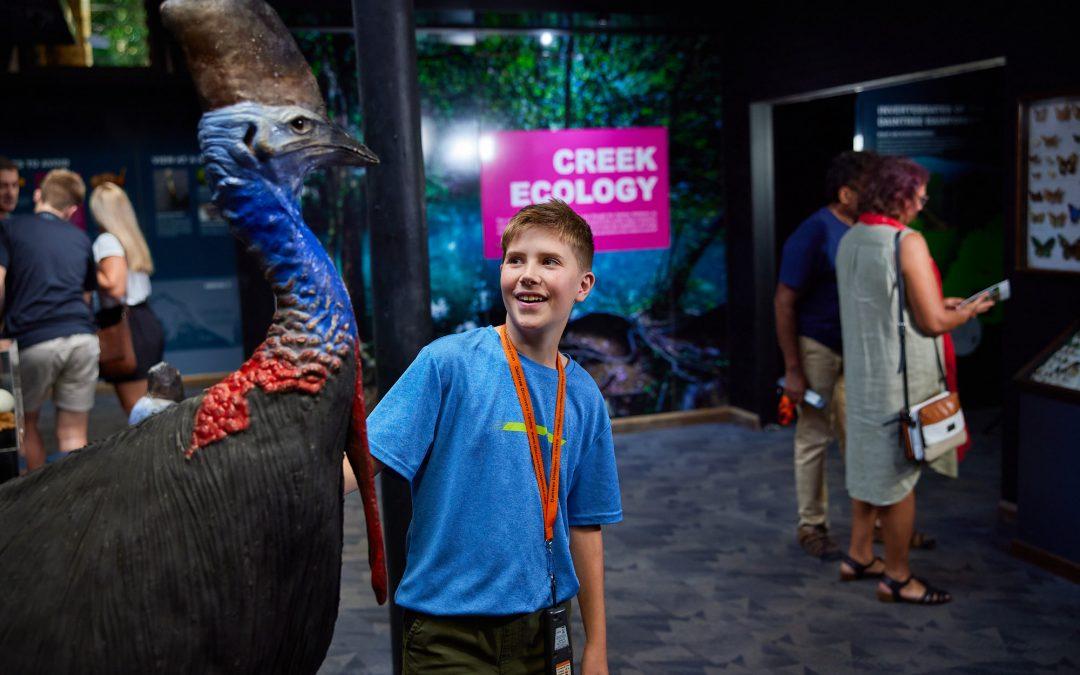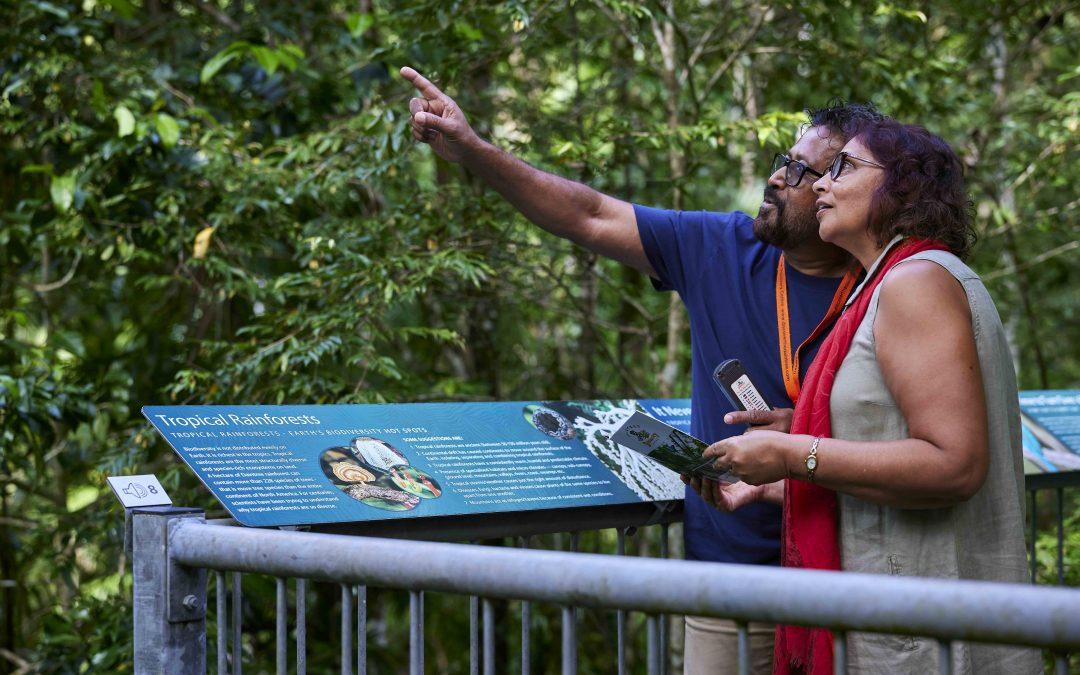×
×

Located 10 kilometres north of the river in the heart of Cape Tribulation, the Daintree Discovery Centre is the must-do spot for the eco-conscious traveller, for kids wanting to know what life was like when dinosaurs roamed (and even spot a few!), and for anyone interested in the general magnificence of the oldest continually living rainforest on the planet.
The Daintree Discovery Centre is the fully immersive and interpretive centre where visitors can experience the rainforest at every level – from high above the canopy looking down at spectacular flora, walkways through the mid-level heart of the rainforest, through to the forest floor, keeping an eye out for cassowaries. Self-guided audio tours are also available, and feature interesting information of how the traditional local Aboriginal people made good use of the natural features of the rainforest.
But with all these exciting activities, it can be a little overwhelming to decide what to do, making sure nothing is left out! We’ve put together a handy checklist for you to make sure no rainforest experience is left unexplored.
1. Immerse Yourself in The Land Time Forgot
Explore the ancient rainforest at every level! Starting at ground level, discover the magic of the rainforest floor, the place where life strains and struggles for light, yet still remains so lush. This vibrant and natural part of the forest has over 400 metres of elevated boardwalks to provide the best viewing for the least amount of impact, allowing visitors to take their own pace through the wilderness. There’re also strategically placed bench seats where you can rest for a while, taking in the magnificence of this natural beauty that surrounds.
Often much richer in life than the forest floor, the canopy can be hard to see at eye level, which is what makes the Aerial Walkway so special. At 11m high and 125m in length, this elevated walkway through the trees allows an unparalleled view into the mid-level rainforest as well as impressive views over McLean’s Creek.
2. Walk On Top of A Rainforest Canopy
Standing 23 meters tall in the middle of thick tropical rainforest, The Canopy Tower provides a truly unique and intimate way to experience the rainforest at different levels, from the forest floor all the way up to the top of the canopy. With information on each of the five levels you’re sure to learn a thing or two (and get your aerobic fitness up) as you ascend through the rainforest levels.
3. Put Yourself in Jurassic World
120 million years ago (give or take a millennia), dinosaurs roamed the super continent Gondwana. While a few things have changed since then (like wifi and Netflix), what hasn’t changed much is the ancient rainforest where we stand today. Take a walk along the Jurassic Forest Track, a path full of life-sized animatronic dinosaurs, guaranteed to surprise and delight everyone.
A seven-metre-long Ripper Lizard, a Giant Thunderbird and a dynamic Diprotodon are among the extraordinary creatures that can be spotted at the Discovery Centre. Four of the seven models are believed to be remnants of a special group of dinosaurs that lived in various parts of Queensland around the Jurassic Period. *RAWR*.
4. Go Dinosaur Spotting… (for real!)
They still exist, you know! Well, their direct descendants do… Cassowaries are believed to be real life relatives of the terrifying velociraptors, a sickle-clawed dino-bird that flourished in central and eastern Asia and Australia about 100 million years ago. They started to evolve, and as of about 40 million years ago the cassowary as we know it remained stable.
Vital to the survival of the rainforest, the Southern Cassowary eats fallen fruit and distributes seeds across the rainforest floor via their droppings. Many trees rely on this methos of seed dispersal to reproduce. By following the Cassowary Circuit, you’ll learn more about the animal, what they eat, and how the species has survived for so many years (and maybe spot one or two!).
5. Learn About Bush Tucker
Australian bush foods have been on the menu for our Indigenous people for over 40,000 years. If you’re keen to better understand bush tucker, you’re in luck – on this immersive walking tour, you’ll discover ancient stories of the Daintree’s Kuku Yalanji people as you make your way through the rainforest, signage pointing out traditional tucker as you go. On the Bush Tucker Trail you’ll learn more about native rainforest nuts, spices and fruits, as well as the plants of the rainforest and how these plants can be used for medicinal purposes.
6. Take A Moment Under an Ancient Fig Tree
Looking up at the giant strangler fig tree at the Daintree Discovery Centre can make a person feel rather insignificant, awed in the magnificent enormity of its stature. Thought to be between 500-600 years old, this strangler fig is amongst the world’s most spectacular and curious plants.
Each ‘tentacle’ starts off as a tiny fig seed that germinates high up in the canopy of a tree. It sends down an intricate web of roots, which gradually wind round the trunk of the host tree. Strangler figs are epiphytes – plants that survive without roots in the ground and trap all the nutrients and moisture they need as it falls from the forest above. They are not parasitic, but they do eventually kill the host tree.
7. Go Tech While Off Grid
This incredible educational facility definitely puts the fun in learning! Informative audio guides in 8 languages, rainforest reptiles and native fish displays, children’s audio guides and displays, a mini theatre, an interpretive centre with touch screens, all providing a huge wealth of information about the rainforest ecosystem presented in fun, interactive ways. centre offers several touch screen with easy access to a variety of information suitable for all ages, as well as colourful displays incorporating lots of images and easy-to-read text.
Learn in remarkable detail about the many animal species – big and small – that call the rainforest home, from the famous cassowary and crocodile to the humble green tree frog. There’s also a 3D cassowary display with life size models, and a reptile room where you can get all up close and personal with the slithery rainforest folk.
